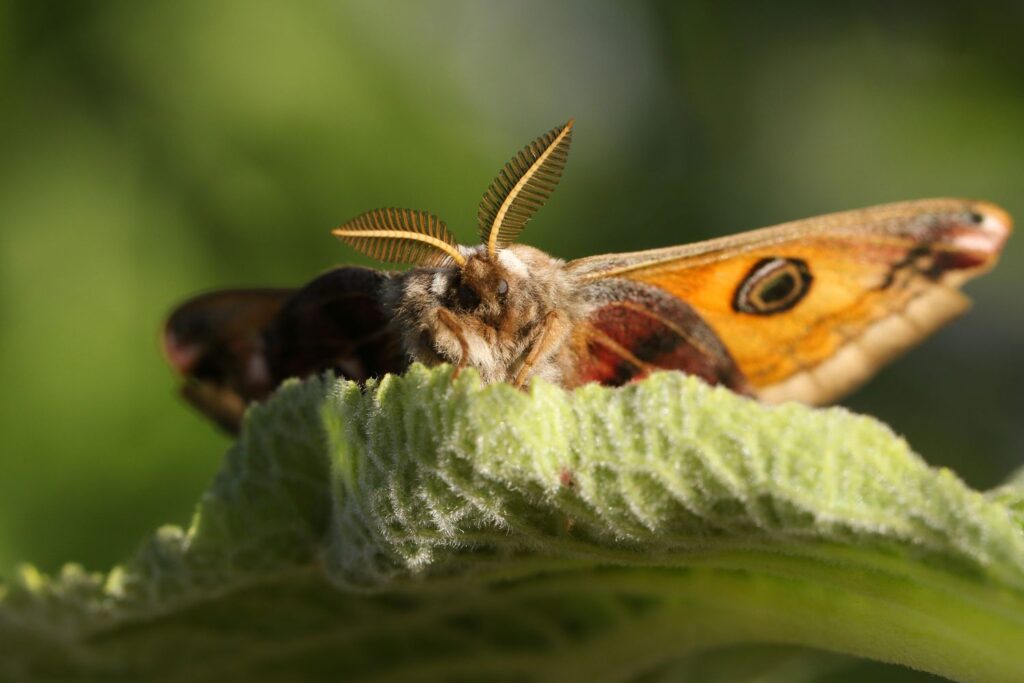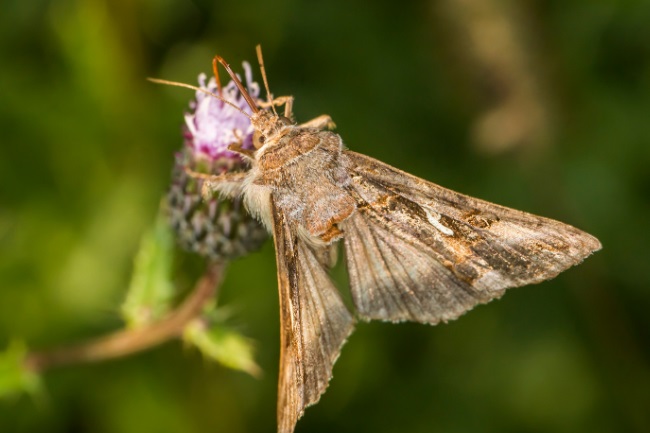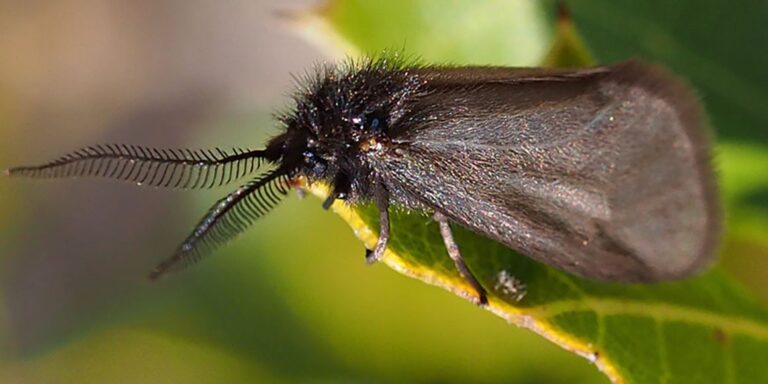In the wild, moths primarily feed on nectar from flowers to sustain their flight and reproduction. They may also consume liquids like sap, fruit juices, and water. Some moth species have herbivorous caterpillars that feed on plant materials.
However, not all moths feed during their adult stage, relying on energy reserves accumulated as caterpillars.
What do moths primarily eat in the wild?
These dietary choices are essential for their survival, energy acquisition, and reproduction, especially given their predominantly nocturnal lifestyle.
Nectar from Flowers
Importance of Nectar for Sustenance: Nectar is the primary energy source for adult moths. It provides them with the sugars they need for flight and daily activities.
Nectar is rich in carbohydrates, which are essential for maintaining the high metabolic rate required for sustained flight.
Furthermore, the consumption of nectar also provides moths with essential nutrients, such as amino acids and vitamins, contributing to their overall health and reproductive success.
Nocturnal Feeding Habits: Many moths are nocturnal, meaning they are most active during the night. This nocturnal behavior is often linked to their feeding habits.
Moreover, moths have evolved specialized adaptations for night feeding, such as highly sensitive antennae and compound eyes that can detect faint light and flower patterns in low-light conditions.
Nighttime feeding on nectar helps avoid competition with diurnal insects like bees and butterflies, which feed on the same floral resources during the day.
Other Liquids

Tree Sap, Rotting Fruit Juices, and Water: While nectar is their primary food source, moths can also consume other liquids, including tree sap, fermenting fruit juices, and even water droplets.
Tree sap provides moths with sugars and minerals, and it can be a valuable resource when nectar-rich flowers are scarce.
Rotting fruit juices are a source of additional sugars and can be particularly attractive to some moth species.
Water is essential for maintaining their overall hydration and can be obtained from dew on vegetation, puddles, or moist soil.
Moisture and Nutrient Sources: Moths, like all insects, require adequate moisture to survive. They obtain this not only from liquid food sources but also from the environment.
Moisture is crucial for various physiological processes, including digestion and respiration.
In addition, some moths may also obtain essential nutrients, such as minerals and salts, from the liquids they consume.
Night-Blooming Flowers
Attraction for Moths: Many moths have co-evolved with specific plant species that produce night-blooming flowers. These flowers have evolved characteristics that make them attractive to moths.
Night-blooming flowers often emit strong, sweet fragrances that moths can detect from a distance, helping them locate potential food sources.
The flowers’ white or pale colors are more visible in low-light conditions, making them easier for moths to find.
Adaptations for Low-Light Conditions: Moths have evolved adaptations to effectively feed on night-blooming flowers, even in darkness.
Their long proboscis (tubular mouthpart) allows them to reach deep into the flower to access nectar.
Specialized chemoreceptors on their antennae help them locate and assess the quality of nectar sources in the dark.
Moths’ compound eyes have a large number of light-sensitive cells, which enhance their ability to see in low-light environments.
How do herbivorous moth caterpillars impact agriculture?
Species like the corn earworm and cabbage looper have caterpillars that are herbivorous and feed on various plant species, leading to significant agricultural pest issues.
Corn Earworm and Cabbage Looper
Corn Earworm (Helicoverpa zea): The corn earworm, also known as the cotton bollworm or tomato fruitworm, is a significant agricultural pest.
The caterpillars of corn earworms primarily feed on the reproductive parts of plants, such as corn ears, cotton bolls, and tomato fruits. In addition, their broad host range and adaptability make them a challenging pest for many crops.
Cabbage Looper (Trichoplusia ni):
Cabbage loopers are notorious for damaging cruciferous vegetables like cabbage, broccoli, and cauliflower.
The caterpillars of cabbage loopers have a looping, “inchworm” movement, which gives them their common name.
Additionally, they feed on the leaves, causing characteristic chewed and irregularly shaped holes in the foliage.
Agricultural Pest Impact
Herbivorous moth caterpillars can cause significant economic losses in agriculture. They often damage crops by feeding on plant tissues, reducing crop yields and quality.
The feeding habits of these caterpillars can result in cosmetic damage to fruits and vegetables, making them less marketable.
Farmers and agricultural scientists employ various pest control methods to manage these herbivorous moth caterpillars, including chemical pesticides, biological control agents like parasitoid wasps, and cultural practices like crop rotation and planting resistant varieties.
The impact of herbivorous moth caterpillars extends beyond agriculture. They can also affect natural ecosystems by feeding on native plants and potentially disrupting local ecosystems.
Integrated pest management (IPM) strategies are increasingly used to minimize the environmental and ecological impact of controlling herbivorous moth pests while protecting crops. These strategies aim to reduce the use of chemical pesticides and promote sustainable agricultural practices.
How do non-feeding adult moths survive?

Moths with non-feeding adults rely on energy reserves acquired during their caterpillar stage to support their metamorphosis into adults.
Moths Relying on Energy Reserves from the Caterpillar Stage
Some moth species undergo a remarkable transformation from caterpillar to adult without feeding during their adult stage. Instead, they rely on the energy reserves accumulated as caterpillars.
Caterpillars are typically voracious feeders, consuming large quantities of plant material to fuel their growth and development.
As they grow, caterpillars store energy in the form of fats and nutrients. These reserves are crucial for their transition into the pupal stage and later as adults.
During the pupal stage, the caterpillar undergoes metamorphosis, transforming into an adult moth. This process involves the reorganization of body tissues and the development of wings, reproductive organs, and other adult structures.
The energy stored as a caterpillar helps sustain the adult moth through this transformational period.
Focus on Reproduction Rather Than Feeding
Adult moths that do not feed typically have a short adult lifespan, often just a few days to a few weeks.Their primary focus during this time is on reproduction. They invest their limited energy resources in finding mates and laying eggs.
Male moths typically use their keen sense of smell and specialized antennae to locate females emitting pheromones.
Once they find a mate, they engage in courtship behaviors and mating. The female moth then lays eggs, often on or near suitable host plants for their caterpillar offspring.
This reproductive strategy maximizes their chances of passing on their genes to the next generation, as their adult lives are brief and dedicated to ensuring the survival of their offspring.
The short lifespan of non-feeding adult moths contrasts with that of nectar-feeding moths, which can live longer and invest more time in foraging and other activities.
FAQ’s
What kills moths?
Moths can be killed using various methods, including insecticides, moth traps, or by using natural remedies like cedarwood or lavender.
What smells do moths hate?
Moths dislike strong, aromatic scents such as cedar, lavender, eucalyptus, and cloves, which are often used in moth repellents.
What instantly kills a moth?
Swatting a moth with a flyswatter or catching it with your hand can instantly kill it.
Is it OK to sleep with a moth in your room?
It’s generally safe to sleep with a moth in your room, but some people may find it annoying. Moths are harmless to humans.
Why are moths so bad?
Moths are not inherently “bad.” They can become pests when they infest clothing or food items, causing damage. Otherwise, they play important roles in ecosystems.
Do moths like the light?
Many moths are attracted to light sources, which can lead them into homes at night. This behavior is known as phototaxis.
What is a moth’s natural enemy?
Natural enemies of moths include predators like birds, bats, and spiders, as well as parasitoid wasps and insects.
Do moths like lemon?
Moths are not particularly attracted to lemon scents. Instead, they are repelled by strong, herbal scents like lavender and cedar.
Final Thought
In conclusion, moths in the wild have diverse dietary habits. They often feed on sweet nectar from flowers, especially at night when they are most active.
Moths also drink tree sap, water, and even eat rotting fruit juices to stay nourished. Some moths, however, have caterpillars that eat plants and can be agricultural pests.
Not all moths eat as adults; some rely on energy stored during their caterpillar stage and focus on making baby moths.
This variety of dietary habits and survival strategies helps moths adapt to their environments and play important roles in ecosystems and agriculture.

